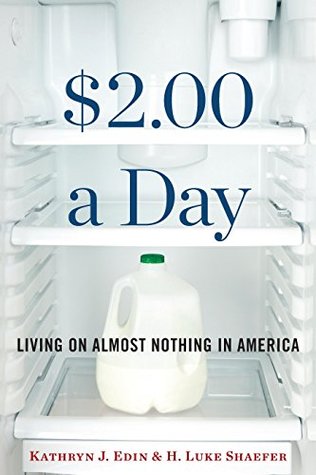More on this book
Community
Kindle Notes & Highlights
Read between
January 10 - January 19, 2018
Yet laying the blame on a lack of personal responsibility obscures the fact that there are powerful and ever-changing structural forces at play here. Service sector employers often engage in practices that middle-class professionals would never accept. They adopt policies that, purposely or not, ensure regular turnover among their low-wage workers, thus cutting the costs that come with a more stable workforce, including guaranteed hours, benefits, raises, promotions, and the like. Whatever can be said about the characteristics of the people who work low-wage jobs, it is also true that the jobs
...more
Private charity in America is often viewed as the little engine that could. It chugs along admirably, providing billions of dollars in aid to the poor each year. And its efforts are valuable—the support that philanthropic organizations provide is part of what makes the lives of America’s $2-a-day poor different from those of the desperately poor in developing countries.
Family homeless shelters take a collection of hurting, desperate families with nothing in common except destitution and a history of bad breaks and abuse, and mix them together over meals and in programs. As a result, sometimes these shelters can be damaging places in their own right.
But what is distinctive about the Delta, along with other rural and semirural places concentrated in the Deep South and Appalachia, is that by the time welfare reform came along, with its new rules around work, opportunities for work had already virtually disappeared for those with low levels of education.
The primary reason to strive relentlessly for approaches that line up with what most Americans believe is moral and fair is that government programs that are out of sync with these values serve to separate the poor from the rest of society, not integrate them into society.
Too often, America has gone down the road of trying to shame those in need. We’ve put up barriers. We’ve made people jump through hoop after hoop—all based on the not-so-subtle presumption that they are lazy and immoral, intent on trying to put something over on the system.
As a nation, the question we have to ask ourselves is, Whose side are we on? Can our desire for, and sense of, community induce those of us with resources to come alongside the extremely poor among us in a more supportive, and ultimately more effective, way?


